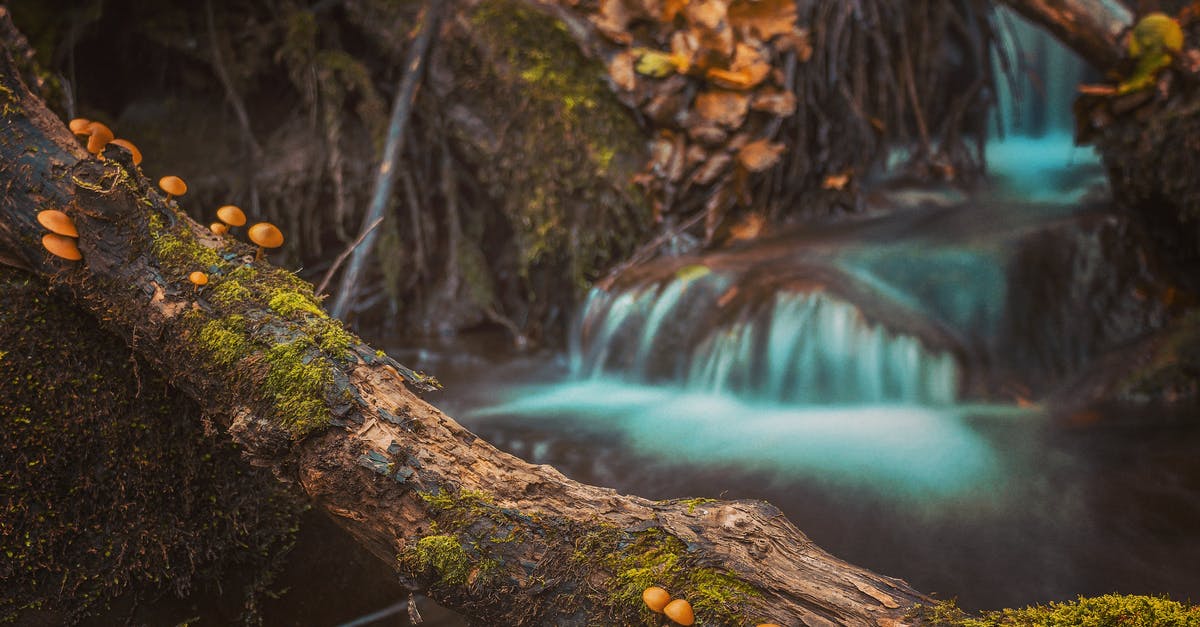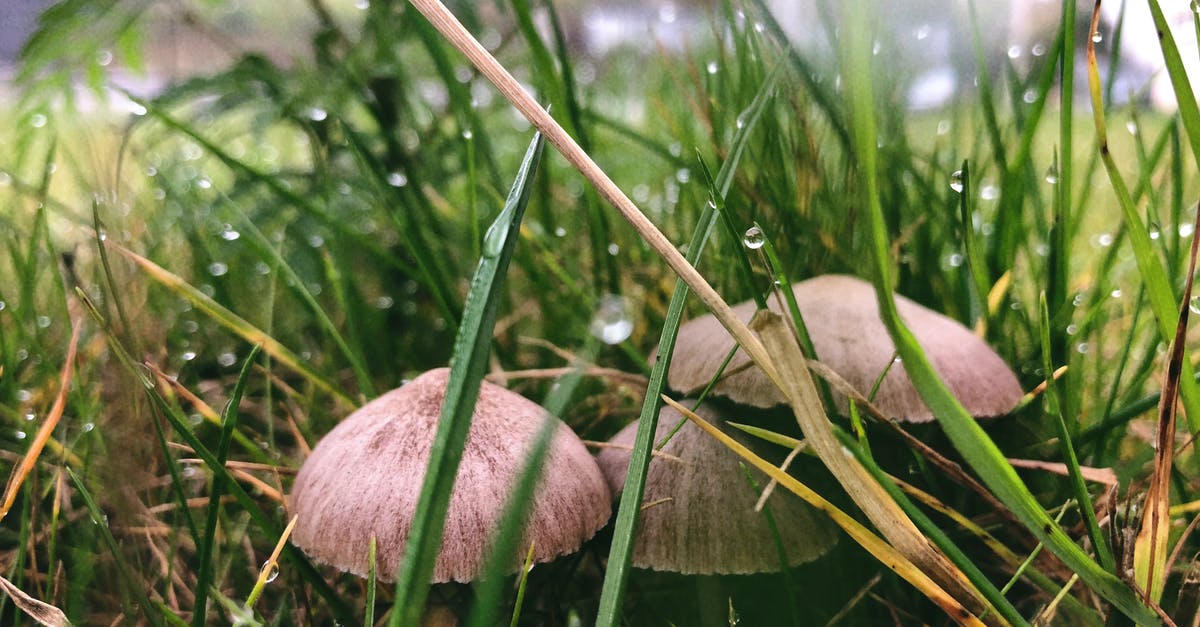How to properly sauté mushrooms so that they don't release water?

Every time I try to sauté mushrooms, they release so much water I end up with a puddle. This, from what I gather, is not the intended effect - they should be slightly browned but dry. Any tips on how to avoid this happening? I tried a bit of everything - I heat up my frying pan for quite a bit first to ensure it's very hot, I use lots of olive oil, but all to no avail.
Maybe I'm cooking too many at a time, i.e., should I cook them in small batches instead? Am I cooking them for too long?
Best Answer
There's a great experiment on Cooking Issues that deals with this very problem. The general advice is to not crowd the pan because of the concomitant release of water; however, the guys found that doing this is actually beneficial because, although a lot of water is initially released, by the time the liquid has eventually evaporated the mushrooms have collapsed and cook far better in the oil that's left. Here's the full explanation:
To make the test really severe, I decided to cook the soaked mushrooms in one batch in an extremely crowded pan, and the dry mushrooms in 3 batches with plenty of room. We weighed out identical amounts of salt and oil (this is the crucial part) and began cooking.
As we expected, the soaked crowded mushrooms formed a soupy mess in the pan. The dry mushrooms didn’t stew and cooked quickly. Here is where it got weird. The dry mushrooms ended up absorbing all the oil. In fact, I had underestimated the amount of oil they needed. They wanted more. I couldn’t add any more oil, however, because it would have ruined the experiment. When the soaked and crowded mushrooms had finally evaporated all their extra water and stated to sauté, they didn’t absorb all the oil. When they were finished, a significant amount of oil was left in the pan. They looked as good and tasted better and less oily than their dry cousins –by a lot.
Our explanation: While the mushrooms are boiling off their water, they aren’t absorbing oil. By the time the boiling stops they have already collapsed, so they aren’t as porous as a raw mushroom and don’t want to absorb oil. The dry mushrooms start absorbing oil from the get-go.
What I do now is this:
Add the all the chopped mushrooms to a pan over a medium heat with some salt and water and cover.
The mushrooms steam and release and ton of their own water: allow to cook for a good 5-10 minutes.
Drain the mushrooms - reserving the released mushroom water - and dry the pan before returning it to a high heat.
When the pan is very hot, add a few tablespoons of oil (depending on the volume of cooked mushrooms) and throw in the mushrooms.
When they are nicely browned, deglaze the pan with the mushroom water
The reason for the two stage process is that I found if you wait for the water to evaporate naturally the residue from the dissolved solids in the water can stick to the pan and burn while the mushrooms are frying. By covering the pan initially, the water doesn't evaporate and can be siphoned off with any dissolved solids (that now can't get stuck to the bottom of the pan) and then reintroduced right at the end. As the pan is so hot it only takes a minute or two for all the water to evaporate and any new fond created by actually sauteeing the mushrooms gets used as well.
Pictures about "How to properly sauté mushrooms so that they don't release water?"



Quick Answer about "How to properly sauté mushrooms so that they don't release water?"
"As you know now, mushrooms have a ton of water in them. When you cook them in a pan, the water will seep out. If you keep the heat low, the mushrooms will just simmer in their liquid. Medium high or high heat will get rid of all that liquid, and will give the mushrooms a nice brown color.How do you stir fry mushrooms without water?
If the heat isn't high enough, mushrooms boil and steam in their own released moisture rather than brown. Mushrooms crowded in a pan will release a lot of water.Why do mushrooms release water when cooking?
Place them in a well ventilated area (any area of the house with a ready supply of fresh air), preferably in the sun if possible. Allow them to air dry for 7-10 days, until they do not give when squeezed. Drying time will vary based on humidity levels and the size of the mushrooms.How do you dry mushrooms before cooking?
Here's how. Place whole, unwashed mushrooms in a brown paper bag and fold the top of the bag over. Then stick the bag in the main compartment of your refrigerator. This works because the bag absorbs excess moisture from the mushrooms so they don't get soggy or moldy.South Park- How do you know she has a cat?
More answers regarding how to properly sauté mushrooms so that they don't release water?
Answer 2
Mushrooms contain a lot of water, so you'll never be able to avoid it completely. However, you can reduce it by:
Frying in smaller batches, which prevents too much water being released at once, which prevents efficient evaporation.
Not stirring the mushrooms too vigorously, especially early on in the process. The tendency is to add the mushrooms to the pan then poke them around. In my experience it's better to just leave them for a bit before stirring and turning them over.
Answer 3
Use the widest pan you can to maximize evaporation while you fry them, also, you can put them in a very low oven for an hour to draw some of the moisture out. Don't crowd the pan, make sure each one has some space.
Also, don't wash them in water before cooking! Mushrooms are sponges, they absorb liquids. Wipe them with a dry cloth or paper towel instead to clean them if they have dirt on them.
Answer 4
Elendil's suggestions are good, but I question your use of "lots of olive oil". You say that you heat up the pan to ensure it is very hot and (then?) use a lot of olive oil. Pouring lots of cold oil in a very hot pan will of course cool it down a lot as well.
My experience is that it's much better to fry mushrooms in small batches in a dry (ungreased), hot non-stick pan, so that the released moisture can evaporate easily. If the moisture is released in hot oil, the oil will probably squirt around and make a terrible mess.
Answer 5
I've read many of these suggestions before, and I never have had enough time to follow any of them. We eat a lot of mushrooms at our house, and I've experimented for years. Here's my current process:
- Rinse the mushrooms in a colander over cold water. Check carefully for stems with dirt, mold, rocks, etc. (I've found all of them.) Shake the colander to knock off as much water as you can.
- Heat a non-stick pan over medium-high heat and put a thin layer of olive oil in the bottom.
Why not use canola oil? I'm in a hurry, and there's a bottle of olive oil next to my stove.
Why not add butter to the oil? I do sometimes (for company), but it takes time and adds saturated fat that just seems unnecessary. - When the olive oil glistens, pour all of the mushrooms in. STAND BACK--you're pouring a damp thing into hot oil. (Honestly, there's not much water left on the mushrooms, so it shouldn't be too bad.)
- Do not salt the mushrooms! Add no seasoning--yet.
- Saute for about five minutes until the inevitable "puddle" appears. Since you're not trying to boil the mushrooms, you need to get that water out of the pan. So, using the lid of the pan, pour off the water into a bowl.
- Drizzle a little more olive oil in and keep moving the mushrooms around until they are golden brown and delicious. (If you're really doing a lot of mushrooms, you may need to pour off any liquid again.)
- About a minute or two before they're done, season liberally with Kosher salt, black pepper, and (sometimes) a pinch or two of dried thyme. You could even add a drop or two of truffle oil if you want to up the "mushroom" flavor.
That's it! And as a pleasant by-product, you have a bowl of mushroom stock. If you're doing a dish with a sauce, be sure to add some of that fantastic stock to it. Otherwise, just pitch it.
Sources: Stack Exchange - This article follows the attribution requirements of Stack Exchange and is licensed under CC BY-SA 3.0.
Images: Pixabay, Aleksa Kalajdzic, Artem Savchenko, Christine Renard
